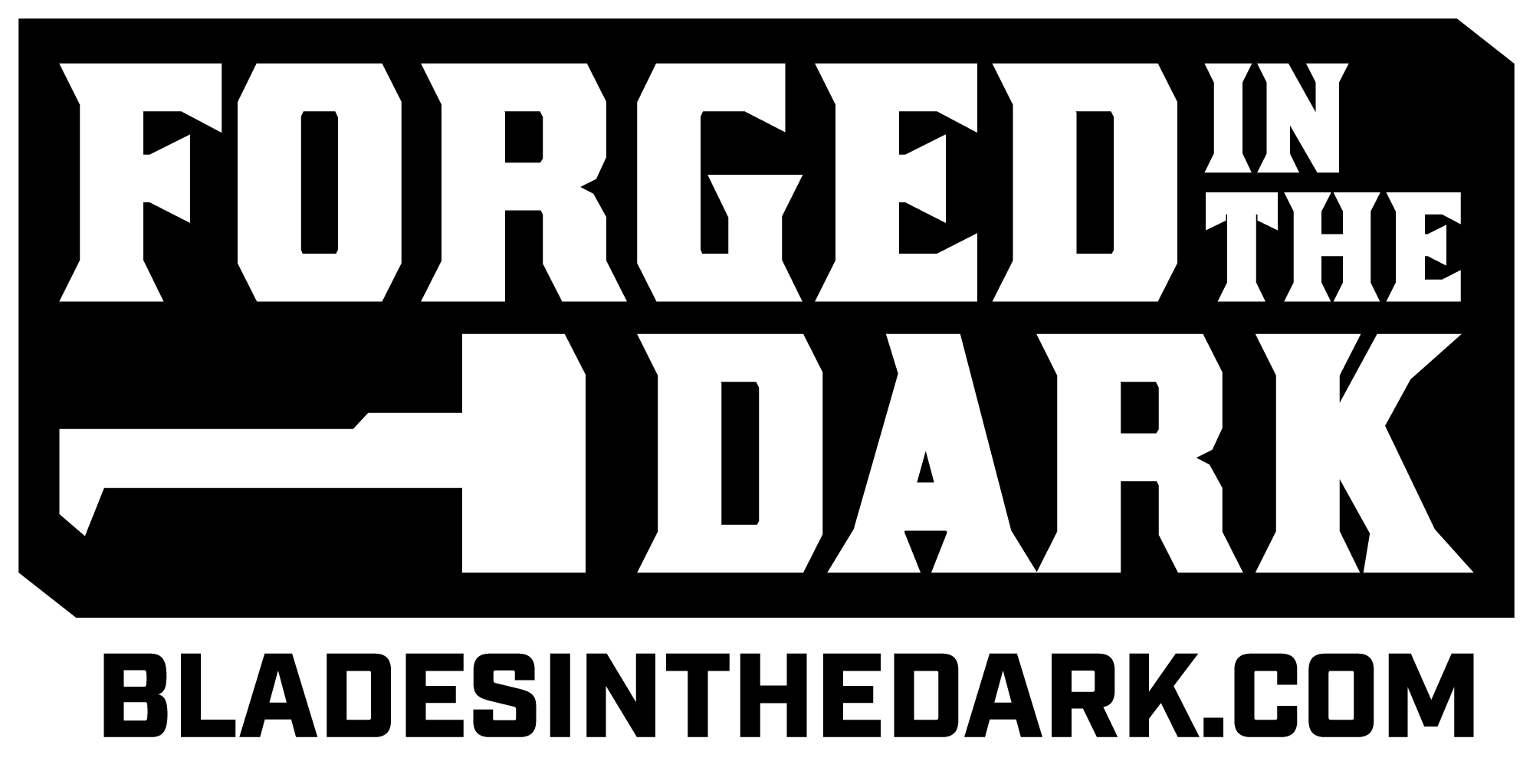Downtime 
After the crew finishes a mission (succeed or fail), they take time to recover, regroup, and prepare for the next mission. This phase of the game is called downtime.
Downtime fulfills two purposes in the game:
- First, it’s a break for the players. During the action of the score, the PCs are always under threat, charging from obstacle to obstacle in a high-energy sequence. Downtime gives them a reprieve so they can catch their breath and relax a bit—focus on lower-energy, quieter elements of the game, as well as explore personal aspects of their characters.
- Second, the shift into a new phase of the game signals a shift in which mechanics are needed. There are special rules that are only used during the downtime phase, so they’re kept “out of the way” during the other parts of play. When we shift into downtime, we take out a different toolbox and resolve downtime on its own terms, then shift back into the more action-focused phases of the game afterwards.
Mission Debriefing
The roles work together to establish the mission outcome.
- The *secondary mission* is briefly discussed.
- The Director updates the intel and heat tracks.
- The Quartermaster marks any crew XP earned during the mission.
- Personnel reminds everyone to mark the XP they have earned. Agents on the secondary mission gain 2xp.
- Counter-intel sends their counter-agents on assignments.
- R&R: Agents that were not on either mission clear up to 3 stress and mark a healing tick.
- The Quartermaster chooses two downtime activities, assigning agents if required. The Director can use intel to fund extra activities.
- The GM determines the conspiracy's response by generating Entanglements.
After the downtime activities are resolved, the game returns to free play, and the group can move toward their next mission.
Downtime Activities Summary
Add +1d to your roll if a friend or contact helps with your downtime activity.
Acquire Asset
Beg, borrow, hire, or steal an asset for the crew. The result indicates the quality of the asset:
- Critical: Exceptional.
- 6: Fine.
- 4/5: Standard.
- 1-3: Poor.
Some items require a minimum quality result to acquire. If you get a lesser result, discuss with the GM what this might mean. Sometimes it means a wounded or damaged version of what you intended. It might mean you were swindled and got a cheap imitation that delivers inferior results. Rarely, it might mean the action is wasted and despite your best efforts the asset is unavailable. You can spend 1 intel to improve the quality by one level.
Long-term Project
Work on a long-term project, if you have the means.
Mark segments on the clock according to your result:
- Critical: Five ticks.
- 6: Three ticks.
- 4/5: Two ticks.
- 1-3: One tick.
Recover
Get treatment to tick your healing clock (like a long-term project). When you fill a clock, each harm is reduced by one level.
Reduce Heat
Say how you reduce heat on the crew and roll your action. Reduce heat according to the result level:
- Critical: Clear five heat.
- 6: Clear three heat.
- 4/5: Clear two heat.
- 1-3: Clear one heat.
Train
Mark 1 xp (in an attribute or your playbook). Add +1 xp if you have the appropriate crew upgrade. You may train a given xp track once per downtime.
Seek out Stability
Visit your source of stability to relieve stress. Roll dice equal to your lowest attribute. Clear stress equal to your highest die result. If you clear more stress levels than you had marked, you overdo it.
Overdo it: You made a bad call when seeking stability. What did you do?
- Attract Trouble. Select or roll an additional entanglement.
- Brag about your exploits. +2 heat.
- Lost. Your character vanishes for a few weeks. Play a different character until this one returns. When your character returns, they’ve also healed any harm they had.
- Tapped. Your current source becomes unavailable. Find a new source.
